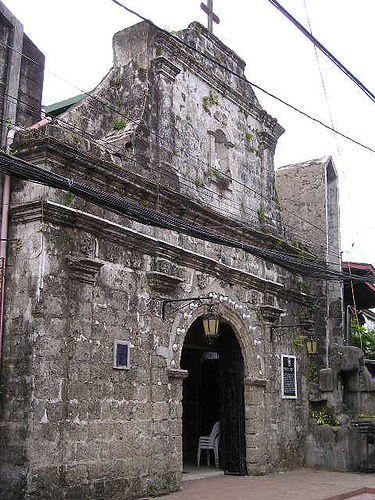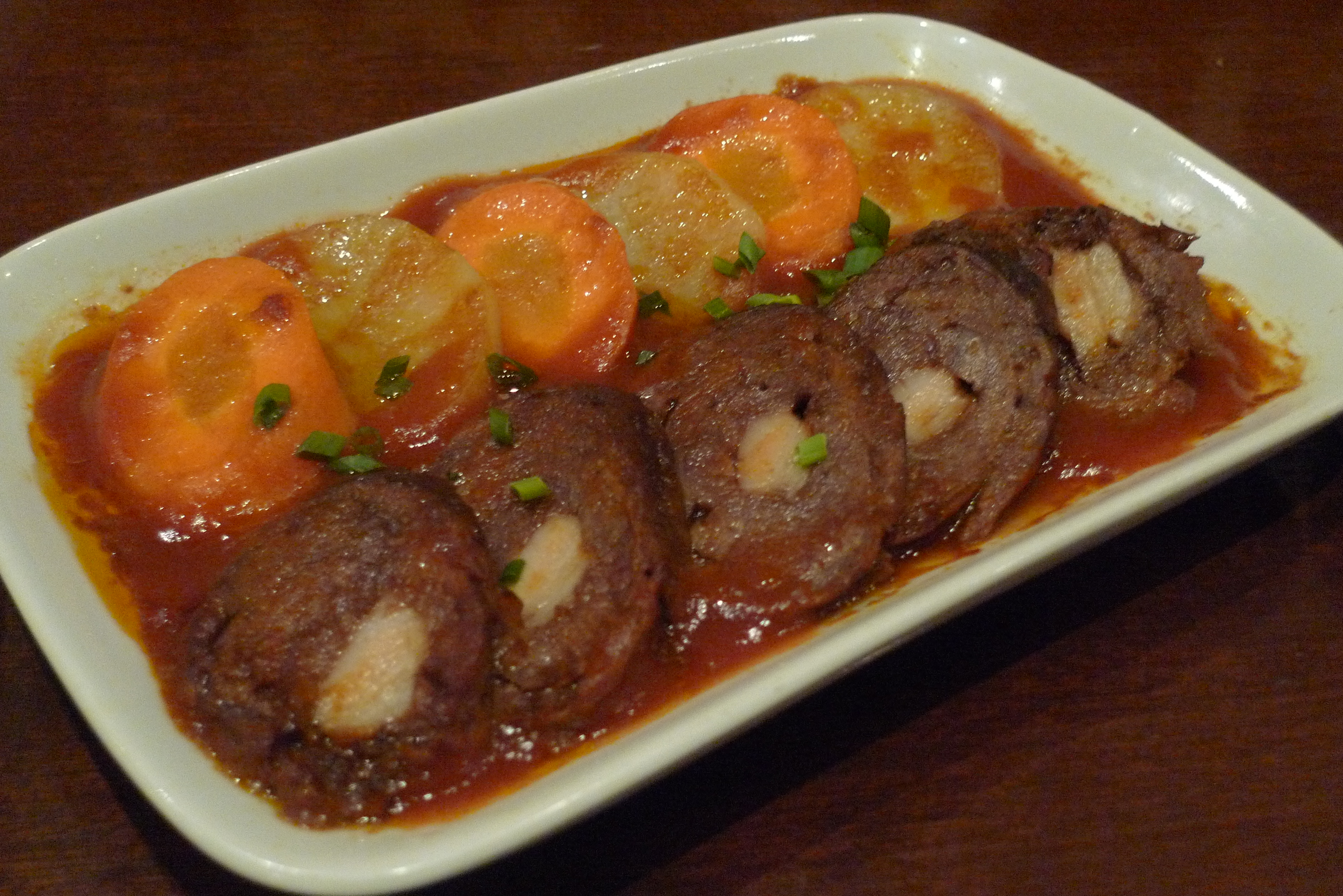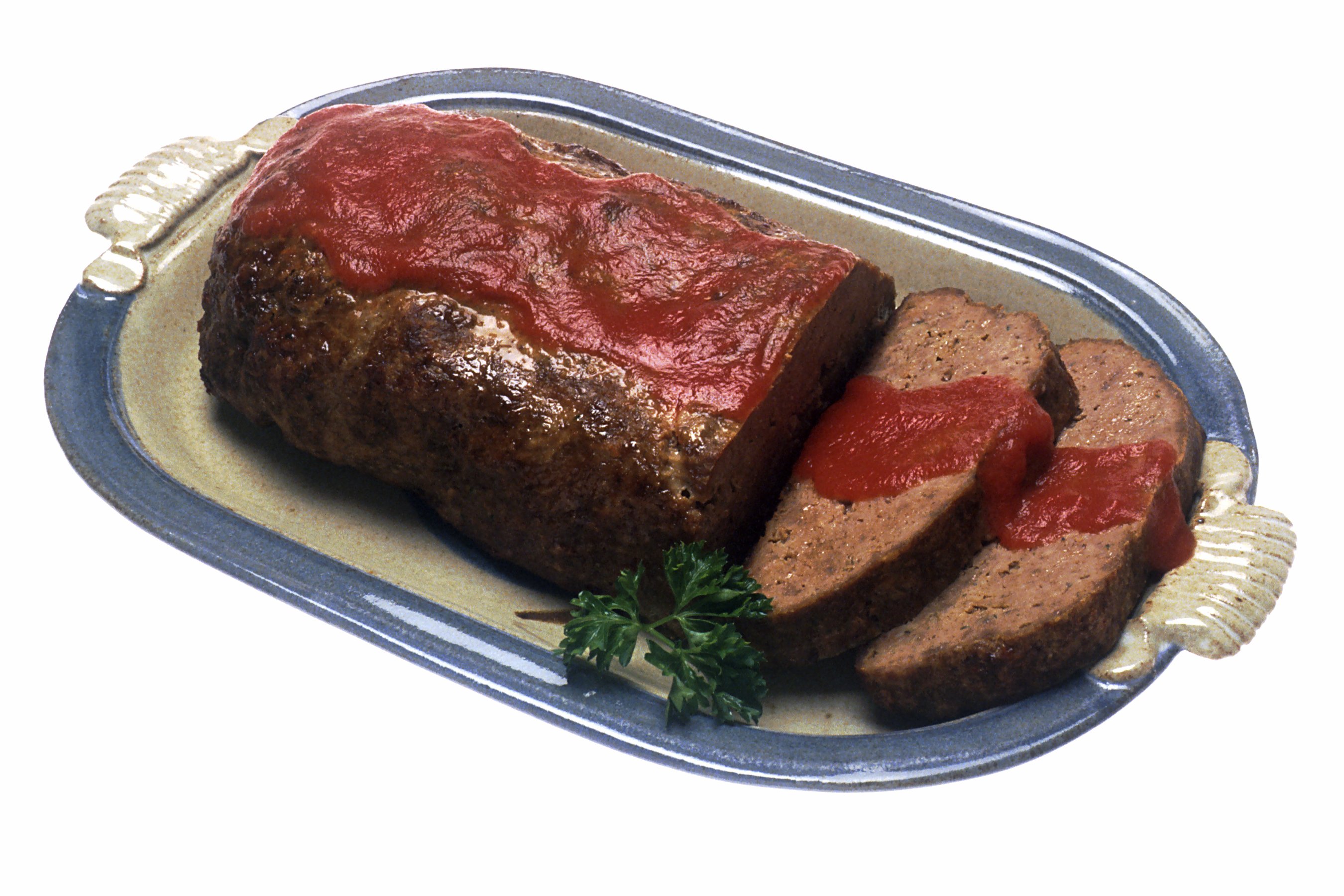|
Everlasting (food)
Everlasting, also known as the Marikina meatloaf, is a Filipino steamed meatloaf originating from Marikina. It is made with ground pork, Chorizo de Bilbao sausages, carrots, bell peppers, raisins, pickle relish, tomatoes, onions, and eggs. It is similar to the ''hardinera'' meatloaf of Quezon and is also traditionally steamed in an oval-shaped tin mold known as a ''llanera'' (or ''lyanera''). See also *Morcón *Embutido * List of pork dishes This is a list of notable pork dishes. Pork is the culinary name for meat from the domestic pig (''Sus domesticus''). It is one of the most commonly consumed meats worldwide,Raloff, JanetFood for Thought: Global Food Trends Science News Online. ... References {{Filipino food Philippine pork dishes ... [...More Info...] [...Related Items...] OR: [Wikipedia] [Google] [Baidu] |
Marikina
Marikina (), officially the City of Marikina ( fil, Lungsod ng Marikina), is a 1st class highly urbanized city in the National Capital Region of the Philippines. According to the 2020 census, it has a population of 456,159 people. It is located along the eastern border of Metro Manila, Marikina is the main gateway of Metro Manila to Rizal and Quezon provinces through Marikina–Infanta Highway. It is bordered on the west by Quezon City, to the south by Pasig and Cainta, to the north by San Mateo, and to the east by Antipolo, the capital of Rizal province. It was founded by the Jesuits on the fertile Marikina Valley in 1630. Marikina was the provincial capital of the Province of Manila under the First Philippine Republic from 1898 to 1899 during the Philippine Revolution. Following the onset of American occupation it was then organized as a municipality of Rizal Province, prior to the formation of Metro Manila in 1975. Formerly a rural settlement, Marikina is now primari ... [...More Info...] [...Related Items...] OR: [Wikipedia] [Google] [Baidu] |
Main Dish
A main course is the featured or primary dish in a meal consisting of several courses. It usually follows the entrée ("entry") course. Typically, the main course is the meal that is the heaviest, heartiest, and most intricate or substantial on the menu. Typically, meat or fish is the main component; but, in vegetarian meals, the main dish will occasionally make an effort to resemble a meat course. Usage In the United States and Canada (except Quebec), the main course is traditionally called an "entrée". English-speaking Québécois follow the modern French use of the term entrée to refer to a dish served before the main course. According to linguist Dan Jurafsky, North American usage ("entrée") retains the original French meaning of a substantial meat course. See also * Full course dinner A full-course dinner is a dinner consisting of multiple dishes, or ''Course (meal), courses''. In its simplest form, it can consist of three or four courses; for example: first c ... [...More Info...] [...Related Items...] OR: [Wikipedia] [Google] [Baidu] |
Embutido (Filipino Cuisine)
''Embutido'', or ''embotido'', is a Philippine meatloaf made with ground pork and stuffed with hard-boiled eggs and sliced ham or various sausages. It is traditionally wrapped in aluminum foil and steamed, though it can also be baked. ''Embutido'' is commonly prepared during Christmas, '' fiestas'', and other special occasions. It can be served hot or chilled, and is usually dipped in banana ketchup or some other type of sweet sauce. Despite the Spanish name, the dish is derived from the American meatloaf. The name is usually translated as Filipino meatloaf. Origins The name of the dish in the Philippines originally referred to ''embutido'', the Spanish word for sausage. Dried sausages are now known under the general terms ''longganisa'' or '' chorizo'' in the Philippines, with the term ''embutido'' used for the meatloaf dish. The dish itself originates from the American meatloaf, introduced during the American colonial period of the Philippines (1898–1946). This was due ... [...More Info...] [...Related Items...] OR: [Wikipedia] [Google] [Baidu] |
Morcón (Filipino Cuisine)
''Morcón'' or ''morconito'' (also spelled ''morkon'' or ''morkonito''), is a Philippine braised beef roulade made with beef flank steak stuffed with hard-boiled eggs, carrots, pickled cucumber, cheese, and various sausages. It is commonly served during Christmas and other festive occasions. Origins The name is derived from the Spanish ''morcón'', a type of dry sausage originally used to stuff the dish. These sausages are now known under the general terms ''longganisa'' or ''chorizo'' in the Philippines, with the term ''morcón'' becoming exclusively used for this dish. Description ''Morcón'' is made from skirt or round-cut beef flank steak, marinated in a soy sauce mixture with spices to taste (usually black pepper and calamansi juice). It is then stuffed with minced carrots, various ''longganisa'' sausages (or even bacon or hotdogs), cheese (usually '' queso de bola''), pickled cucumber, and various other ingredients. The beef is carefully rolled into a cylinder, tied hor ... [...More Info...] [...Related Items...] OR: [Wikipedia] [Google] [Baidu] |
Hardinera
''Hardinera'' (Philippine Spanish: ''jardinera''), also known as the Quezon meatloaf or the Lucban meatloaf, is a Filipino meatloaf made with diced or ground pork topped with sliced hard-boiled eggs, pineapples, carrots, bell peppers, peas, tomatoes, and raisins, among others. The ingredients used are identical to the ones used in Filipino '' menudo''; while the cooking process is similar to the Filipino ''embutido''. It is traditionally steamed in an oval-shaped tin mold known as a ''llanera'' (or ''lyanera''), which is also used to make ''leche'' flan. It originates from the province of Quezon in Luzon Island. See also * Everlasting *Morcón *Embutido * List of pork dishes This is a list of notable pork dishes. Pork is the culinary name for meat from the domestic pig (''Sus domesticus''). It is one of the most commonly consumed meats worldwide,Raloff, JanetFood for Thought: Global Food Trends Science News Online. ... References Philippine cuisine Pork dishes Pinea ... [...More Info...] [...Related Items...] OR: [Wikipedia] [Google] [Baidu] |
Philippine Cuisine
Filipino cuisine ( fil, lutong Pilipino/pagkaing Pilipino) is composed of the cuisines of more than a hundred distinct ethnolinguistic groups found throughout the Philippine archipelago. A majority of mainstream Filipino dishes that compose Filipino cuisine are from the food traditions of various ethnolinguistic groups and tribes of the archipelago, including the Ilocano, Pangasinan, Kapampangan, Tagalog, Bicolano, Visayan, Chavacano and Maranao ethnolinguistic groups. The styles of preparation and dishes associated with them have evolved over many centuries from a largely indigenous (largely Austronesian) base shared with maritime Southeast Asia with varied influences from Chinese, Spanish and American cuisines, in line with the major waves of influence that had enriched the cultures of the archipelago, as well as others adapted to indigenous ingredients and the local palate. [...More Info...] [...Related Items...] OR: [Wikipedia] [Google] [Baidu] |
Steaming
Steaming is a method of cooking using steam. This is often done with a food steamer, a kitchen appliance made specifically to cook food with steam, but food can also be steamed in a wok. In the American southwest, steam pits used for cooking have been found dating back about 5,000 years. Steaming is considered a healthy cooking technique that can be used for many kinds of foods. Because steaming can be achieved by heating less water or liquid, and because of the excellent thermodynamic heat transfer properties of steam, steaming can be as fast, or faster, than cooking in boiling water, as well as being more energy efficient. History Some of the world's earliest examples of steam cooking were found in China's Yellow River Valley, early steam cookers made of stoneware have been found dating back as far as 5,000 BCE. And also in Gunma Prefecture, Japan, created during the Stone Age. Some of the second earliest examples of steam cooking have been found in Italy and Sardinia, cre ... [...More Info...] [...Related Items...] OR: [Wikipedia] [Google] [Baidu] |
Meatloaf
Meatloaf is a dish of ground meat that has been combined with other ingredients and formed into the shape of a loaf, then baked or smoked. The final shape is either hand-formed on a baking tray, or pan-formed by cooking it in a loaf pan. It is usually made with ground beef, although ground lamb, pork, veal, venison, poultry, and seafood are also used, sometimes in combination. Vegetarian adaptations of meatloaf may use imitation meat or pulses. The cooked meatloaf can be sliced like a loaf of bread to make individual portions. It can easily become dry; therefore, various techniques exist to keep the dish moist, like mixing in bread crumbs and egg, covering it with sauce, wrapping it, or using moisture-enhancing ingredients in the mixture, such as filling it with fatty meats, rich cheeses, or vegetables. History Meatloaf of minced meat was mentioned in the Roman cookery collection ''Apicius'' as early as the 5th century. Meatloaf is a traditional German, Scandinavian and ... [...More Info...] [...Related Items...] OR: [Wikipedia] [Google] [Baidu] |
Ground Pork
Ground meat, called mince or minced meat outside North America, is meat finely chopped by a meat grinder or a chopping knife. A common type of ground meat is ground beef, but many other types of meats are prepared in a similar fashion, including pork, veal, lamb, goat meat, and poultry. Dishes Ground meat is used in a wide variety of dishes, by itself, or mixed with other ingredients. It may be formed into meatballs which are then fried, baked, steamed, or braised. They may be cooked on a skewer to produce dishes such as '' adana kebabı'' and ''ćevapi''. It may be formed into patties which are then grilled or fried (hamburger), breaded and fried (''menchi-katsu'', Pozharsky cutlet), or braised (Salisbury steak). It may be formed into meatloaves or pâtés and baked. It may also be used as a filling or stuffing for meat pies and ''böreks'', and also as stuffing. It may be made into meat sauce such as ragù, which in turn is used in dishes like pastitsio and moussaka, or ... [...More Info...] [...Related Items...] OR: [Wikipedia] [Google] [Baidu] |
Chorizo De Bilbao
Chorizo de Bilbao, also known as Chorizo Bilbao, is a type of Filipino pork and beef dry sausage. It was originally produced by Vicente Genato of the Genato Commercial Corporation in Manila and the name is a genericized trademark originating from the branding coined by Genato from his family's original home city of Bilbao, Spain. Today, most of the production has shifted to the American company Marca El Rey, who copied the branding. The sausages are popular among Filipino American communities in the United States and the Philippines. The ingredients of Chorizo de Bilbao is mostly identical to other unsweet Filipino ''longganisas'', except for the addition of paprika and the dry and fine texture similar to pepperoni. See also *Chorizo de Macao * List of sausages This is a list of notable sausages. Sausage is a food usually made from ground meat with a skin around it. Typically, a sausage is formed in a casing traditionally made from intestine, but sometimes synthetic. S ... [...More Info...] [...Related Items...] OR: [Wikipedia] [Google] [Baidu] |
Pickle Relish
A relish is a cooked and pickled product made of chopped vegetables, fruits or herbs and is a food item typically used as a condiment to enhance a staple. Examples are chutneys and the North American relish, a pickled cucumber jam eaten with hot dogs or hamburgers. In North America, the word "relish" is frequently used to describe a single variety of finely-chopped pickled cucumber relish, such as pickle, dill and sweet relishes. Relish generally consists of discernible vegetable or fruit pieces in a sauce, although the sauce is subordinate in character to the vegetable or fruit pieces. Herbs may also be used, and some relishes, such as chermoula, are prepared entirely using herbs and spices. Relish can consist of a single type or a combination of vegetables and fruit, which may be coarsely or finely chopped; its texture will vary depending on the slicing style used for these solid ingredients, but generally a relish is not as smooth as a sauce-type condiment such as ketchup. ... [...More Info...] [...Related Items...] OR: [Wikipedia] [Google] [Baidu] |
Quezon Province
Quezon, officially the Province of Quezon ( tl, Lalawigan ng Quezon), is a province in the Philippines located in the Calabarzon region on Luzon. Kalilayan was the first known name of the province. It was later renamed Tayabas. In honor of the former governor of the province who later became the second president of the Philippines and the first to be freely elected, Manuel L. Quezon, the province’s name was then changed to Quezon. Lucena, the provincial capital, seat of the provincial government, and the most populous city of the province, is governed independently from the province as a highly urbanized city. To distinguish the province from Quezon City, it is sometimes called Quezon Province. Quezon is southeast of Metro Manila and is bordered by the provinces of Aurora to the north, Bulacan, Rizal, Laguna and Batangas to the west and the provinces of Camarines Norte and Camarines Sur to the east. Part of Quezon lies on an isthmus connecting the Bicol Peninsula to the main p ... [...More Info...] [...Related Items...] OR: [Wikipedia] [Google] [Baidu] |

.jpg)




